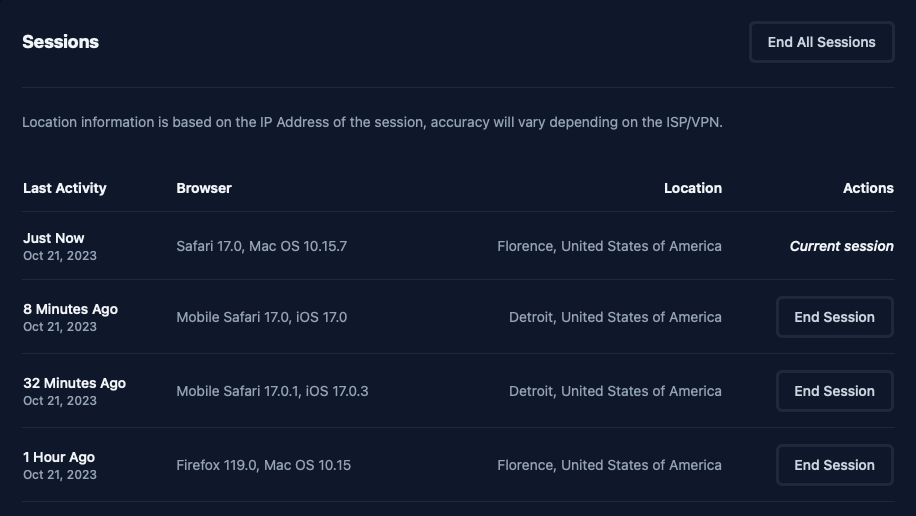If your server is proxied through Cloudflare, they're handling your requests before passing it along to your server. When they do this, the traditional IP Address property (request.request.socket.remoateAddress) will come from Cloudflare's servers.
Meaning, if you run the AdonisJS method to fetch the user's IP Address request.ip(), you'll instead get the IP Address of the Cloudflare server that handled the request. I ran into this fun little, production only, issue while writing Adocasts' session tracking feature (screenshotted below).

Thankfully, we do have a couple locations that we can use to get our user's real IP Address.
Note, if you're an enterprise Cloudflare user, you have access to the True-Client-IP header.
CF-Connecting-IP
Cloudflare will pass along with the proxied request a new header called CF-Connecting-IP which will contain the client IP Address that connected to Cloudflare's server; meaning your user's IP Address.
Note, there's also an IPv6 version of this header as well. Cf-Connecting-IPv6.
Route.get('/', async ({ request }) => { const ip = request.header('CF-Connecting-IP') return ip })Copied!
You can find more info about this via Cloudlfare's documentation.
X-Forwarded-For
The X-Forwarded-For header will contain both Cloudflare's proxy server IP Address and your user's original IP Address. They'll be provided as a comma delimited list and through my testing it seems like the user's IP Address will come first.
Note, Cloudflare does recommend using CF-Connecting-IP over X-Forwarded-For when available.
Route.get('/', async ({ request }) => { let ip = request.header('CF-Connecting-IP') if (!ip) { ip = request.header('X-Forwarded-For')?.split(',').at(0) } return ip })Copied!
Again, you can find more about this too, via Cloudflare's documentation.